Wild Saturniid Silk Moth - Cecropia
Hyalophora cecropia
The Cecropia, or Robin moth, is America's largest moth. It is a member of the family of giant silkmoths - the Saturniidae. Since Cecropia moths are noted for being difficult to rear successfully indoors in the larger stages, I am going to sleeve them on a pear tree outdoors after they change to their second or third instar. These eggs are from a female captured just a little ways south of here. Cecropia moths will eat pear, apple, cherry, and several other fruit trees, and also willow.
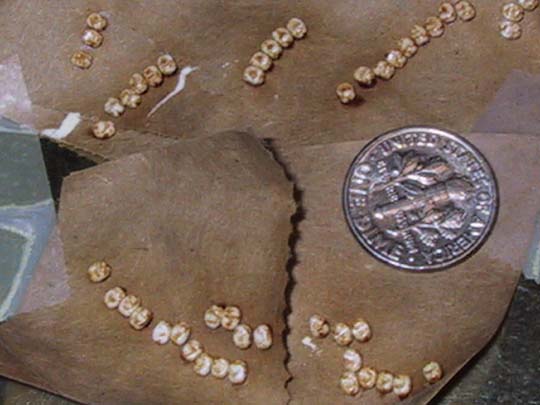
The eggs remind me of Cracker Jacks - the "glue" that the moth uses to stick them to the surface she lays them on makes them look like they're glazed. They are not sticky to the touch.
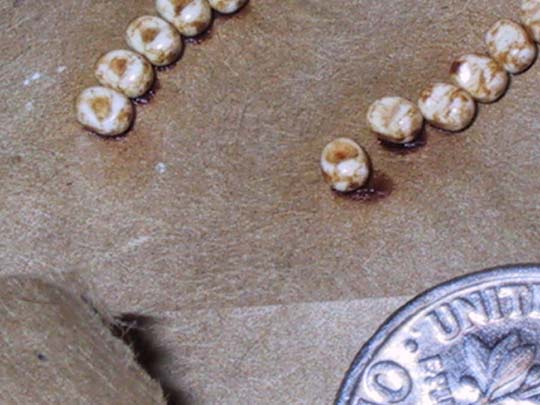
A closeup of the eggs. April 8.
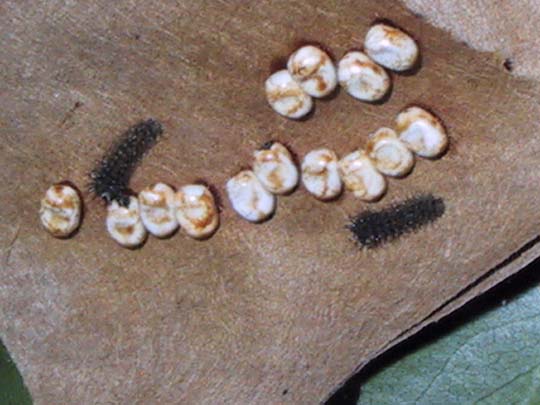
I got hatchlings on April 9. These caterpillars eat part of the egg shell before wandering off in search of food.
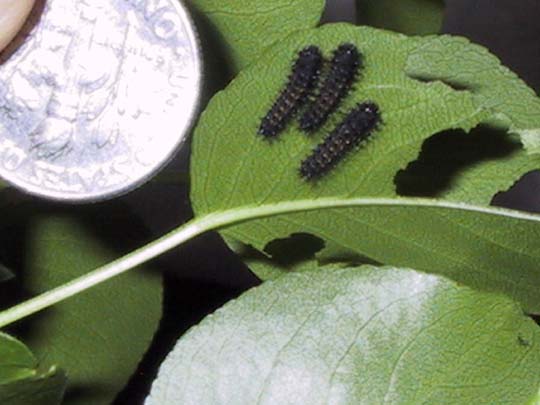
On the third day, the caterpillars have grown noticeably. They are on pear leaves, inside of a large open jar. The pear stems are kept green by sticking them through holes in the lid of a yogurt container full of water. It's important not to use an open-topped vase to hold the water, as the tiny caterpillars will wander down the stems into the water and drown. April 11.
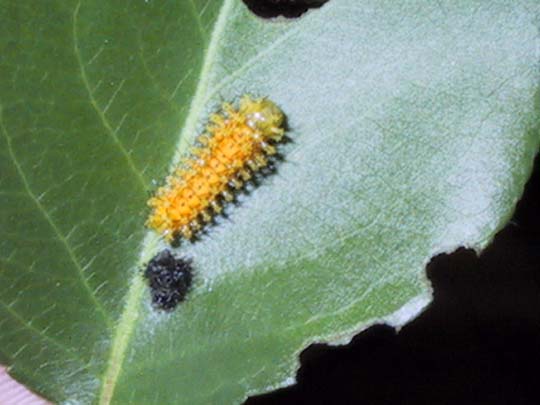
April 15. Today, the caterpillars started shedding their first skins. This one has just shed; as they age a few hours, they will darken. I think that the worms eat part of their skins; at least, they disappeared, although I didn't see them eating them.
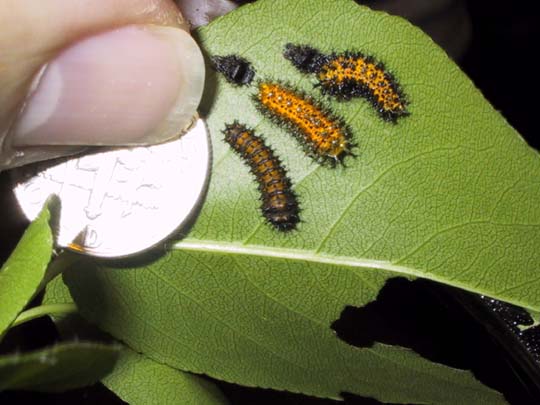
Here, you can see that although they're still pretty small, they're husky for caterpillars. They are eating a lot of the pear leaves. April 15, 2004.
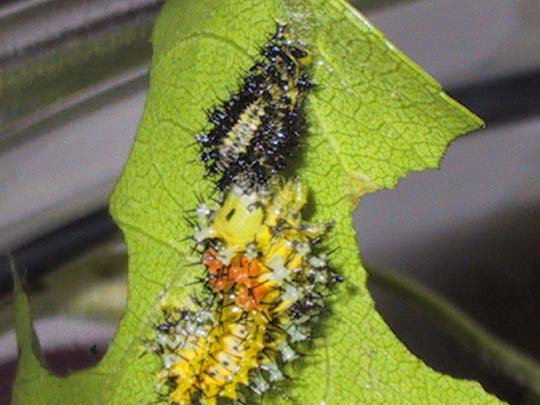
April 20, 2004. The worms have changed skins into the third instar. Here, you can see a newly-ecdysed larva eating its previous skin.
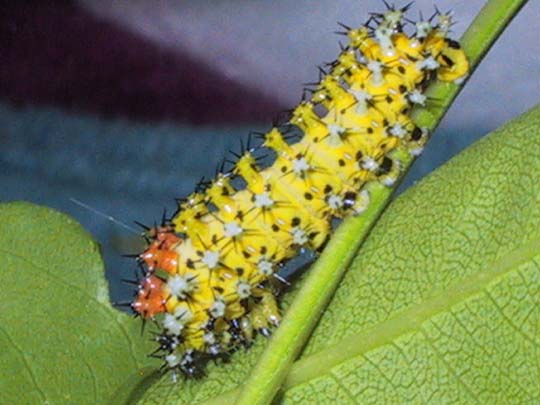
This is what they look like now. April 20, 2004.
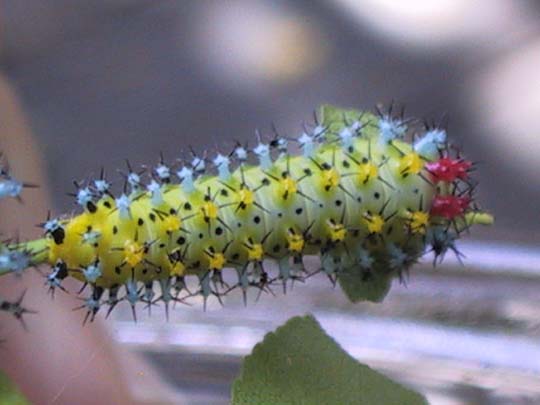
April 25, 2004. Still in the third skin, but the colors have shifted and become much brighter.
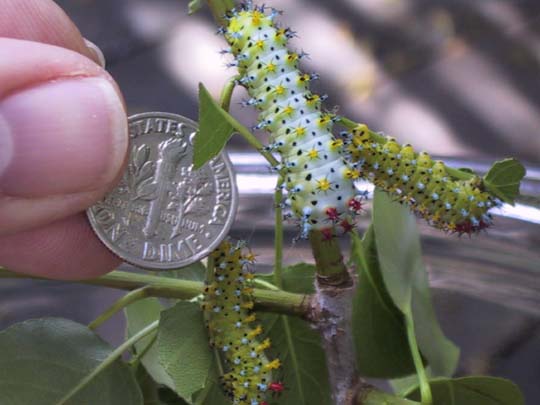
The caterpillars are getting bigger as well as brighter.
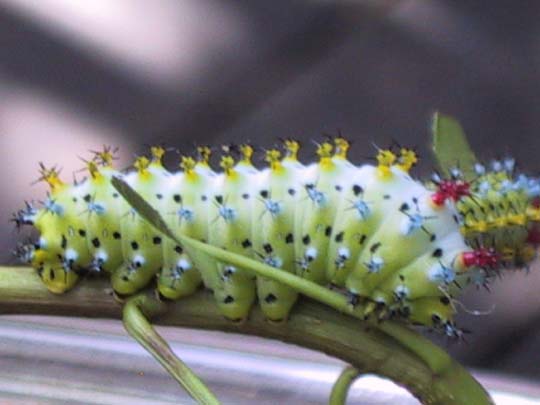
This head-curled-under posture is typical of cecropia and some of the other Saturniid moths.
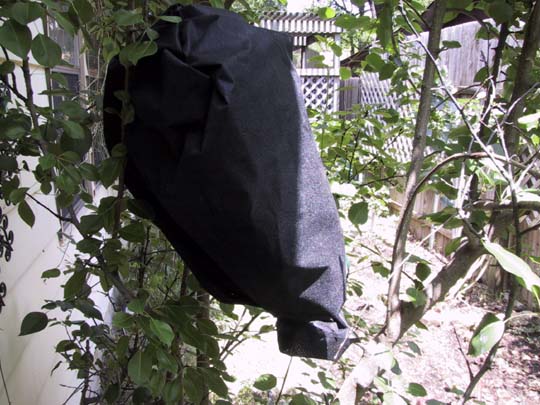
Because cecropia caterpillars can have difficulty with indoor rearing, I am putting all but one of the nine remaining larvae into a sleeve on the pear tree outside. The sleeve is made of a very fine landscape mesh; it will allow air and rain to pass through, while keeping out any predators or parasites. It is attached by slipping it onto the branch and securing with a tie at the bottom. I am keeping a single larva inside to observe. April 25, 2004.
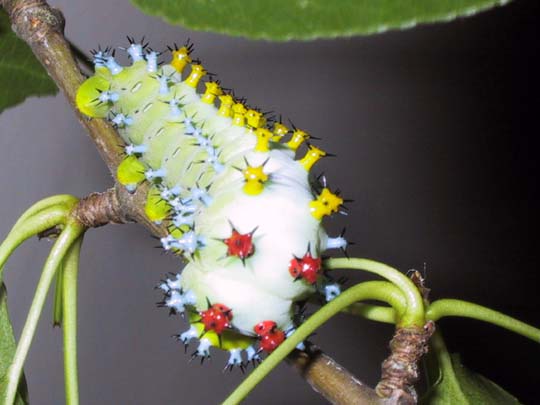
My inside-observation larva has shifted into the fourth instar now. The colors of it seem almost surreal. I'm opening the sleeve every day or two to tip out the frass, and checking on all the larvae - they are doing fine. April 29, 2004.
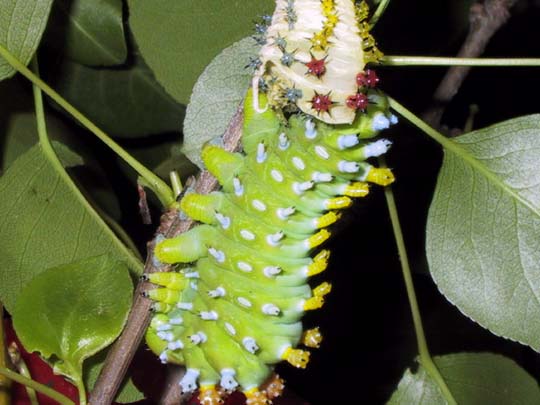
May 7, 2004. Today, the larvae started the change to the fifth instar. You can see where it has walked out of its skin. It sat motionless for nearly two days before shedding.
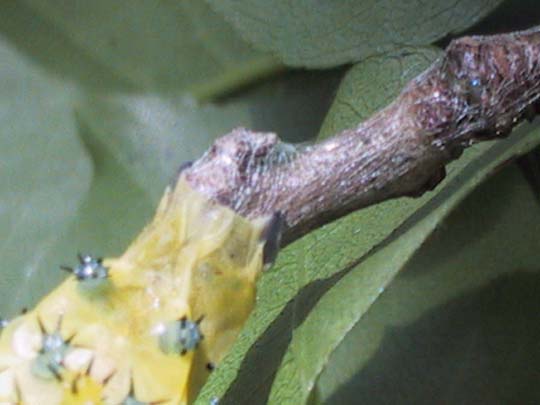
This is something I've read about, but it's difficult to see in practice - before the part where it sits still, the worm spins a silken pad to hold onto with its back feet, to help it shed the old skin. Here, you can see the silk fibers and the skin clinging to them.
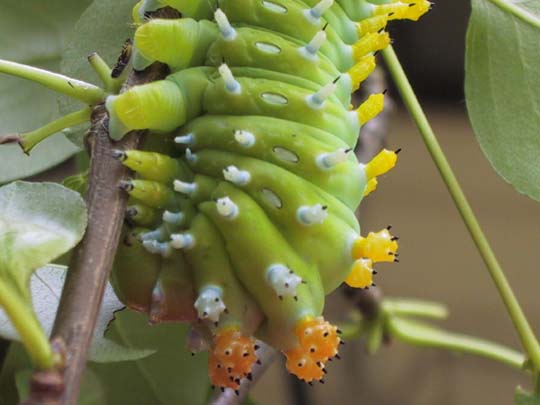
The fifth instar isn't quite as bright as the fourth, but it's very massive looking.
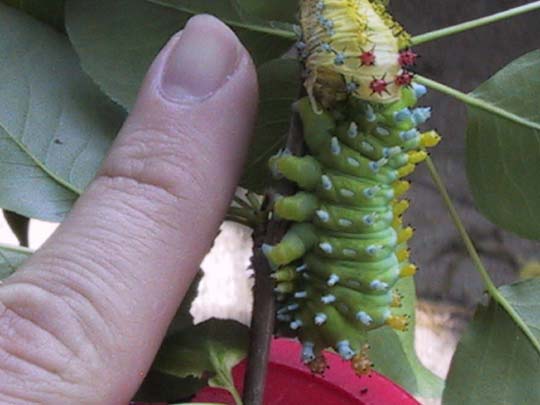
Here, you can see the larva with my index finger.
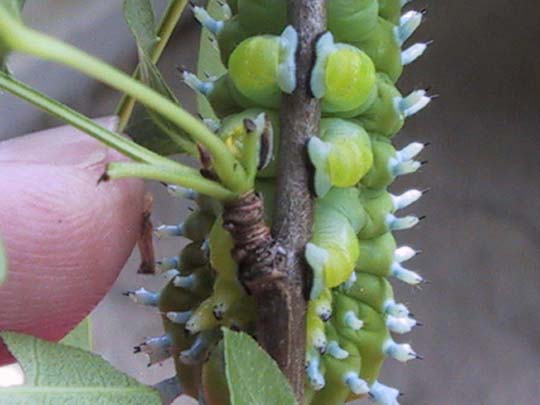
Its legs are very chunky, and it now has blue "feet" on the prolegs. May 7, 2004.
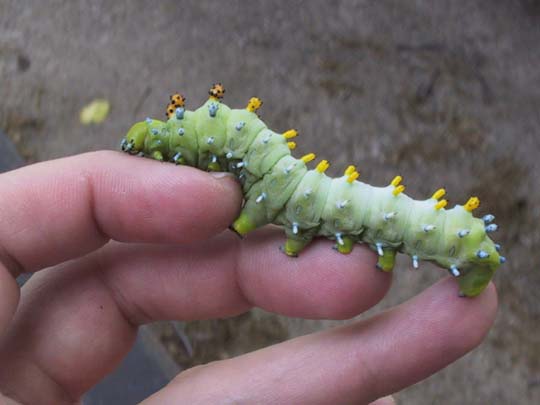
The cecropia caterpillar continues to grow. It's about 3 inches long now. May 10, 2004.
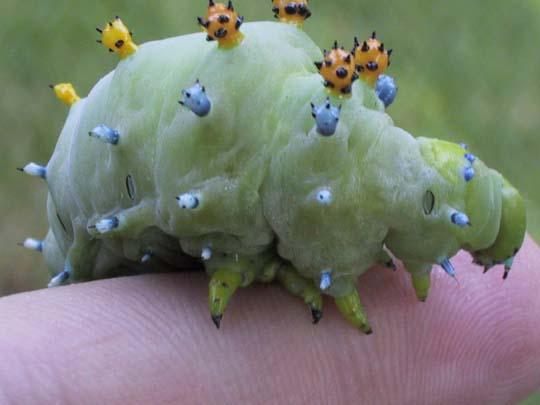
Its colors are less intense than in the fourth instar. Here, you can see the head stretched out; the worm spends most of its time with the head tucked under, but will stretch it out to eat or to move. Note the large spiracles (breathing holes) along the side; one is just to the rear of the blue spike on the right hand side beside the head.
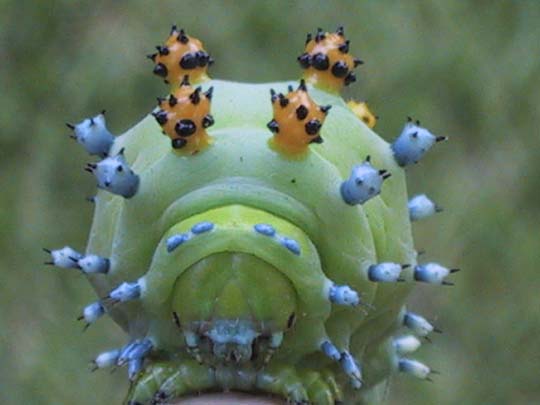
This is the more usual position of the caterpillar's head. May 10, 2004
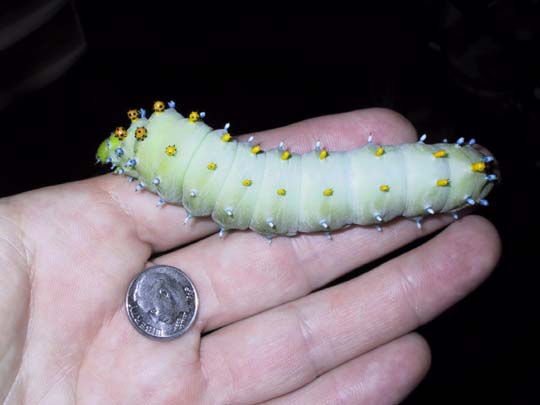
The worm is becoming truly massive. It's just over four inches long now, and thicker than my thumb. Note how much smaller the knobs seem now - they haven't changed size, the caterpillar has just grown that much.
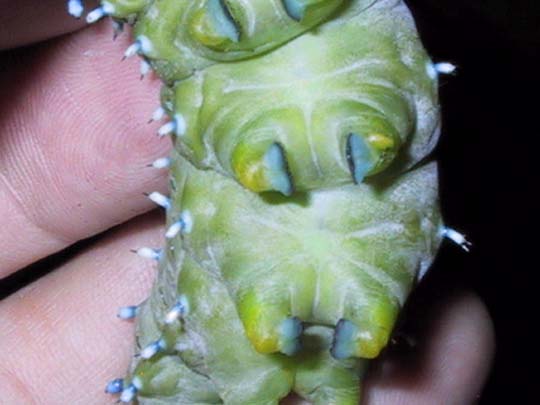
This is the underside of the caterpillar. It's very muscular - it doesn't like being held like this, and it wriggles very strongly.
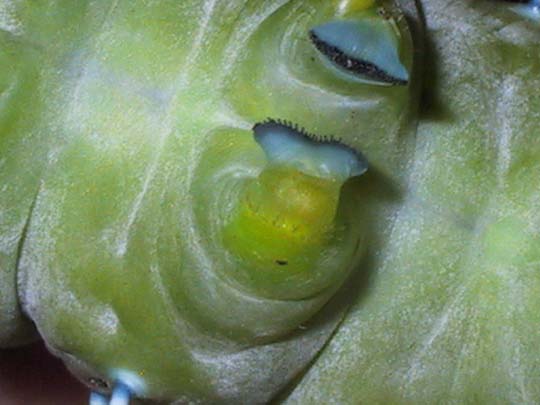
This is a closeup of the gripping feet. They have tiny fine hooks on them - they have a very powerful grip! They hook onto the branch pretty powerfully, and if they get hooked into your shirt, they're impossible to get free. Ask me how I know, hey?

If I were the dime, I'd be scared. May 18, 2004
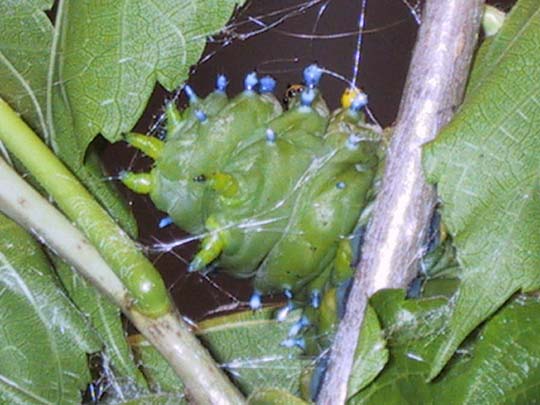
On May 23, the huge caterpillar begins to spin its cocoon. It starts by sketching silk onto *everything* it touches, and eventually pulling several leaves into a little cluster around it, like blankets. I hung the stem with the leaves from a string; the caterpillar won't walk up the string, because it's to thin.

Note: Don't hang the caterpillar's spinning-stick in the middle of the room, where it can catch and strangle your housemates. This is a friend of mine, demonstrating for your safety.
After several hours of work, the cocoon becomes more and more opaque. It is nearly white, but will darken over the course of the next few days. May 24, 2004.
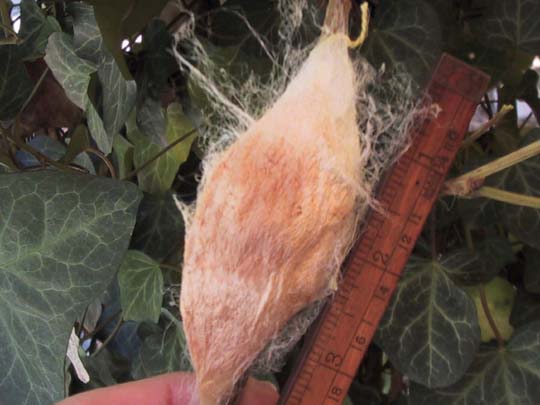
The cocoon is huge - almost exactly four inches, tip to tip. I have peeled away the surrounding leaves, so that I can study the cocoon. May 28, 2004.
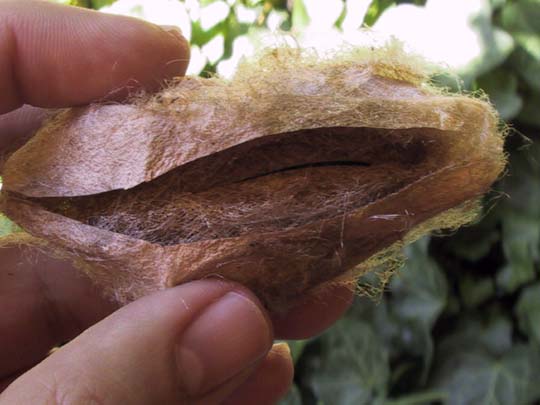
The cocoon consists of three distinct layers - the first is a hard shell, the second is an air space filled with wisps of silk, and the inner layer is rough silk. The inner layer reminds me of coconut husk. I carefully slit these open with a pair of surgical scissors. I don't recommend that you try this at home - it can be fatal to the developing pupa if it is punctured.
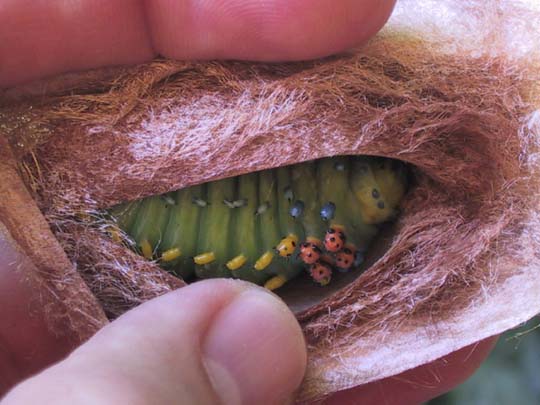
Inside, the caterpillar has changed into a pre-pupa. In this stage, it can no longer walk or eat, although it can wriggle. The spines and knobs from the caterpillar skin, as well as the bright colors, are still clearly visible. May 28, 2004.
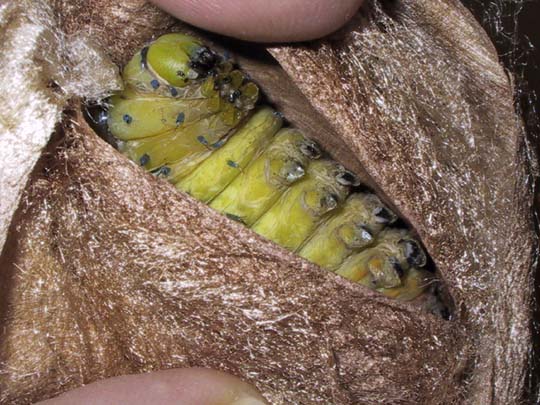
Seven days later, the pre-pupa is showing signs of getting ready to slip out of its caterpillar skin. The skin is noticably faded, and if you look closely you can see spots where it has begun to loosen. June 4, 2004.
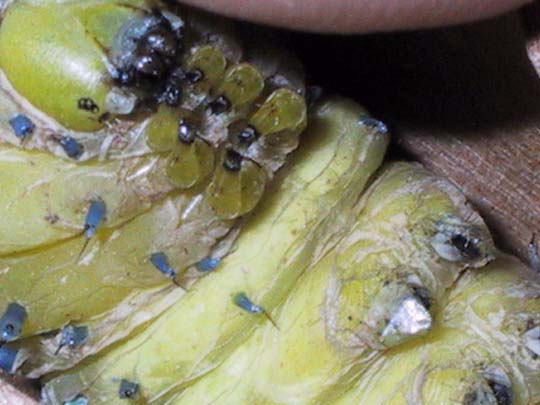
Here, a closeup shows the loosening of the pre-pupa skin. June 4, 2004.
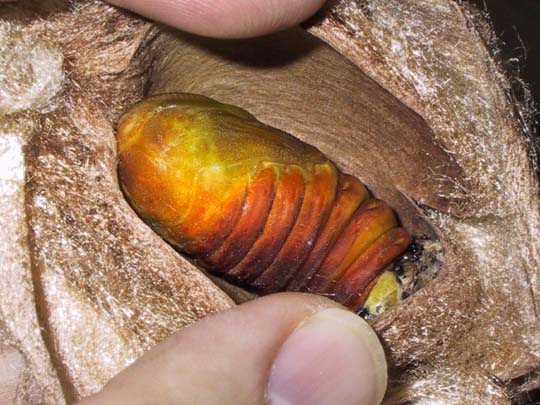
June 5, 2004. Although I missed the actual transformation, it wasn't by long - the pupa has slipped out of the caterpillar skin, which is visible at the lower right. The colors of the fresh pupa are amazing - it looks like a sarcophagus carved of multicolor jade.
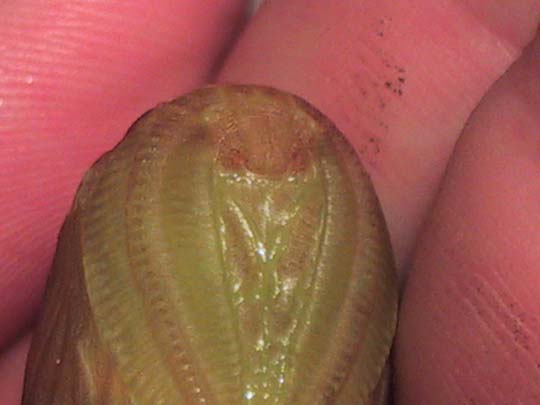
This is a detail of the pupa's head. The eyes are in the center; the legs paired together down the middle, and the huge antennae (this is a male; the female's antennae are smaller) down the sides. June 5, 2004.
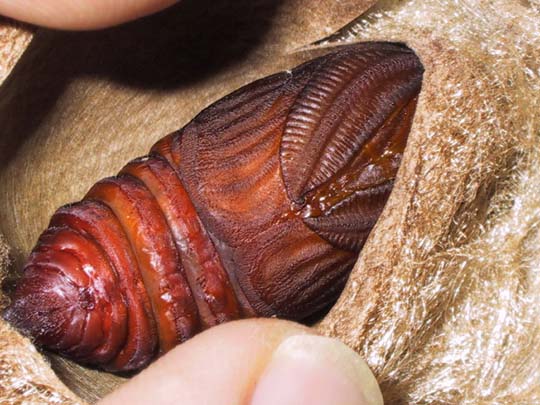
A day later, the pupa has darkened to a rich brown. The antennae are clearly visible on the upper right. The wings are right below that, wrapped around the body. Also, four segments down from the base of the wings, note the two little bumps in the center of the segment - these will become the male's genitalia. A female pupa would be smooth at this spot. June 6, 2004.
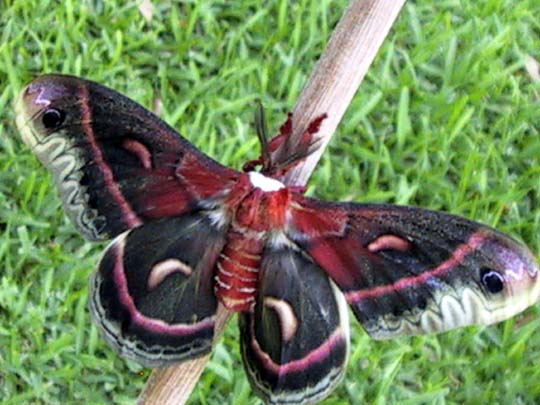
The cocoons spent the winter in the refrigerator crisper drawer in a freezer baggie. The moths hatch out a week or two after removal from cold storage. The moth reminds me a lot of the calleta moth; the wing shape and body patterning are similar. June 8, 2005
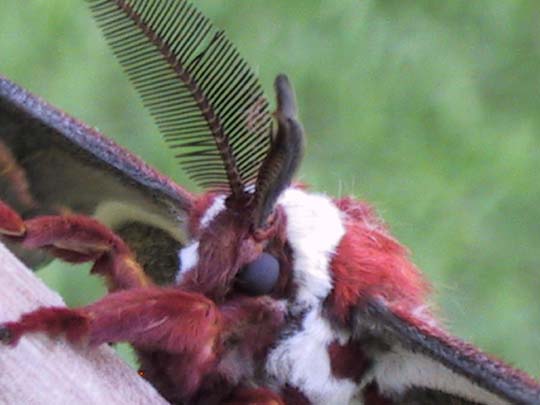
You can tell this is a male, mainly by his HUGE antennae. These will help him detect the pheremones released by a scenting female.
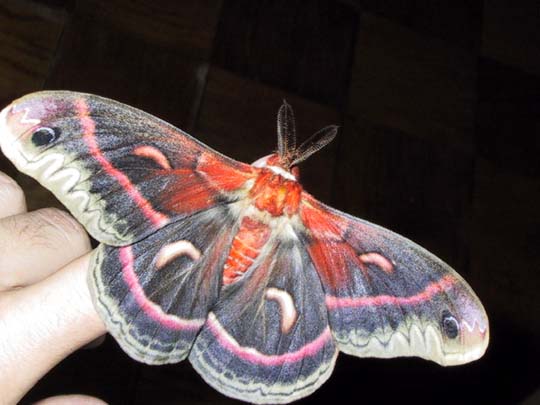
When the cecropia moth is agitated, it fans its wings up and down. This is down...
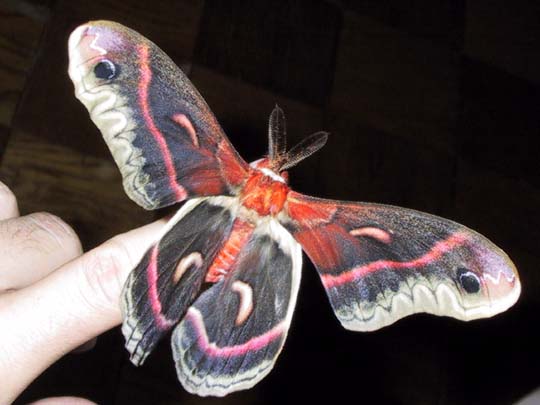
And this is up.
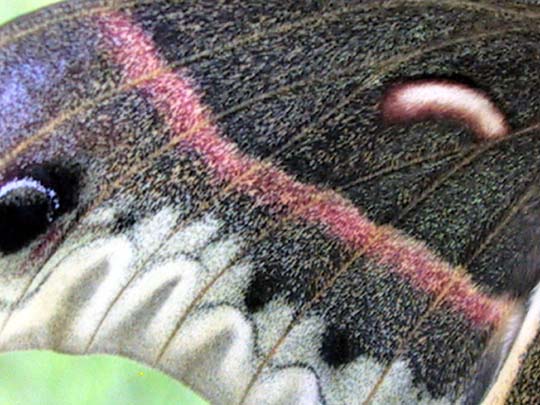
This is a closeup of the top of the forewing.
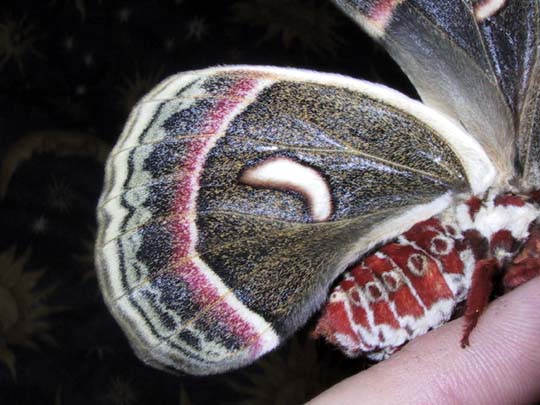
This is a closeup of the underside of the hindwing.
That's the whole life cycle. Cecropia moths are strictly univoltine, meaning that they only have one full generation per year. The moths that emerge this spring will lay eggs which will hatch into caterpillars and spin cocoons which will hatch next spring. June 8, 2005.